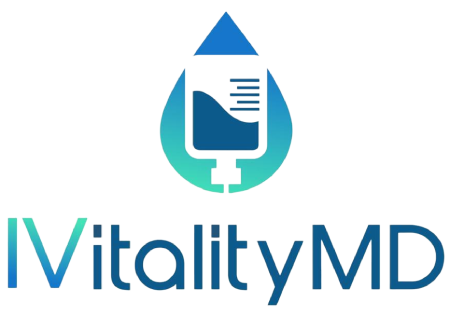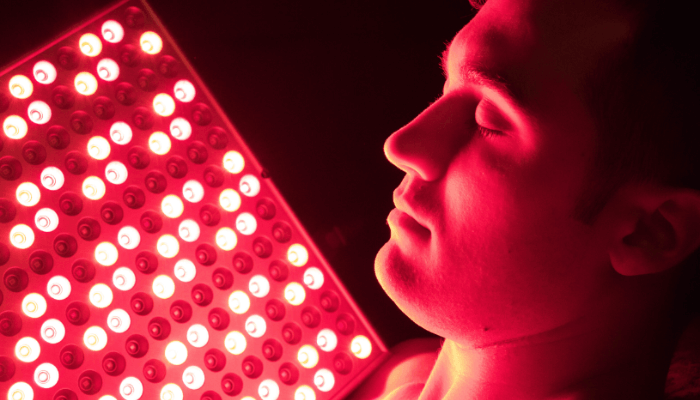Acne or breakout is a typical skin condition that influences a large number of individuals around the world. It has set off a chase after innovative treatments, including red-light therapy (RLT), that extend beyond traditional medicines. But does red light therapy help acne and skin inflammation?
Red light therapy near Houston has emerged as a potent game changer in dermatological health. Despite the appeal of such aesthetic treatments, IVitality considers it mandatory to address, ‘Does red light therapy help acne?’. This is because many people are looking for non-invasive acne treatments.
What is Red Light Therapy?
Red-light therapy is also called low-level laser therapy (LLLT) and photobiomodulation (PBM). It entails exposing the skin to modest levels of red or near-infrared light; the main difference is that the human eye cannot detect infrared wavelengths.
This non-invasive therapy has been studied for its capacity to promote skin healing, decrease inflammation, and combat acne.
Other names you might hear to describe red light therapy include:
- Low-intensity laser light therapy
- Low-power laser treatment
- Non-heating LED light
- Gentle laser therapy
- Cool laser therapy
- Biostimulation and photonic stimulation
- Photobiomodulation and light therapy
Can I Use Red Light on My Face Every Day?
To achieve the best results, we recommend utilizing your LED light treatment equipment three to five times each week. While you may now enjoy the convenience of receiving an exceptional beauty treatment in the comfort of your living room, it is critical to consult your doctor before trying new skincare products.
While red light treatment is usually considered safe, the frequency of usage is determined by various criteria, including light intensity and skin sensitivity. It is advisable to begin with shorter sessions of 10-15 minutes and progressively increase the time as your skin adjusts.
Most people find applying the red-light treatment on their faces safe daily. However, it is critical to watch your skin’s response. If you observe any symptoms of irritation, such as redness or extreme dryness, minimize the number or length of sessions.
The Procedure: Does Red Light Therapy Help Acne?
RLT is effective in treating acne problems. The red light infiltrates the skin, supporting cell action and expanding the age of ATP (adenosine triphosphate), which is the energy source of cells. The energy enhances the skin’s normal recuperating processes and decreases aggravation related to skin inflammation.
The wavelengths in RLT pass through the skin without causing damage. It supports cell movement, subsequently uplifting desired outcomes. The primary goal is boosting your immune system and encouraging the body’s metabolic processes.
Reduce Inflammation: Red light therapy’s anti-inflammatory properties make it effective at relieving skin inflammation, making it suitable for use on acne lesions with inflammation.
Red light therapy stimulates collagen production: an important protein for skin health. An increase in collagen production can improve skin elasticity, decrease scarring and help promote overall skin rejuvenation.
Red Light Therapy Killing Acne-Causing Bacteria: Red light therapy has proven successful at killing off Cutibacterium acnes bacteria responsible for acne breakouts.
Improved Healing Process: Red light therapy has also proven to accelerate tissue repair and wound healing processes to assist in recovering from acne lesions faster.
Red Light Therapy Has Minimal Side Effects: In contrast with some topical treatments and harsh skincare products, red light therapy has minimal adverse side effects, making it suitable for many skin types and conditions.
Decreased Irritation
Mostly, skin breakouts are related to irritation that causes redness and swelling. By inhibiting particular cytokines that promote inflammation, red light therapy reduces inflammation. This inflammation decline helps relieve the redness and irritated look of acne lesions.
Enhanced Wound Healing
Acne lesions might seem like minor wounds on the skin. Red light treatment promotes cellular repair and regeneration, which speeds up wound healing time. Doing so can speed up the repair of acne-damaged skin.
Targeting Oil Glands
Excessive sebum production contributes to acne development. Red light treatment can modulate the activities of oil or sebaceous glands, resulting in decreased sebum production. This, in turn, reduces the blockage of your skin pores by cleaning them – as clogged pores are a primary precursor to acne.
Scientific Evidence and Studies
Numerous research studies have examined the effectiveness of red-light therapy in treating acne. While ongoing, some encouraging results indicate an excellent influence on acne-prone skin.
A research study in the Journal of Cosmetic and Laser Therapy found a significant decrease in skin breakouts following a progression of red-light treatment meetings.
Another review in the Journal of Dermatological Treatment found that red light treatment decreased sebum creation and further developed skin texture among skin inflammation patients. However, individual results may vary, requiring additional studies to determine the best parameters for RLT in acne treatment.
Practical Considerations
Now that you know the answer to ‘Does red light therapy help acne?’, it is essential to consider the following practical approaches to reap the advantages of RLT and PBM.
Consistency is Essential
Red light treatment is not a one-time remedy. Consistent and frequent sessions are required to see significant changes in acne. It is critical to stick to the suggested treatment regimen.
Combination Therapies
Adding red light therapy to other acne treatments, such as topical drugs or skincare routines, can improve overall outcomes. Consultation with a dermatologist might assist in developing a personalized strategy based on individual requirements.
Patience and Realistic Expectations
It is essential to be patient since results may take time. It is critical to set reasonable expectations and recognize that the efficacy of RLT varies by individual.
Who Should Not Use Red Light Therapy?
While red light treatment is generally regarded as safe for most people, some should exercise caution or avoid it entirely. Pregnant ladies, epileptic patients, individuals having seizures, and those with a background of photosensitivity ought to talk with a specialist before taking red light therapy into their routine.
For instance, if you take medicines that trigger photosensitivity, you should counsel a specialist before going for RLT. Individuals with a background marked by skin disease or who are getting malignant growth treatment ought to stay away from such treatments unless advised differently by their oncologists.
The Bottom Line
Summing up the conversation on ‘Does red light therapy help acne?’, it is inferred that RLT is a practical methodology for treating skin breakouts. Its ability to decrease irritation, improve wound recuperation, and modulate the stimulation of oil glands gives a comprehensive way to treat skin inflammation.
While scientific data regarding RLT and functional medicine services support its potential advantages, it is critical to consider red light treatment as part of a comprehensive skincare plan. Individuals considering this non-invasive approach should be patient, consistent, and realistic about the potential outcomes as research progresses.

